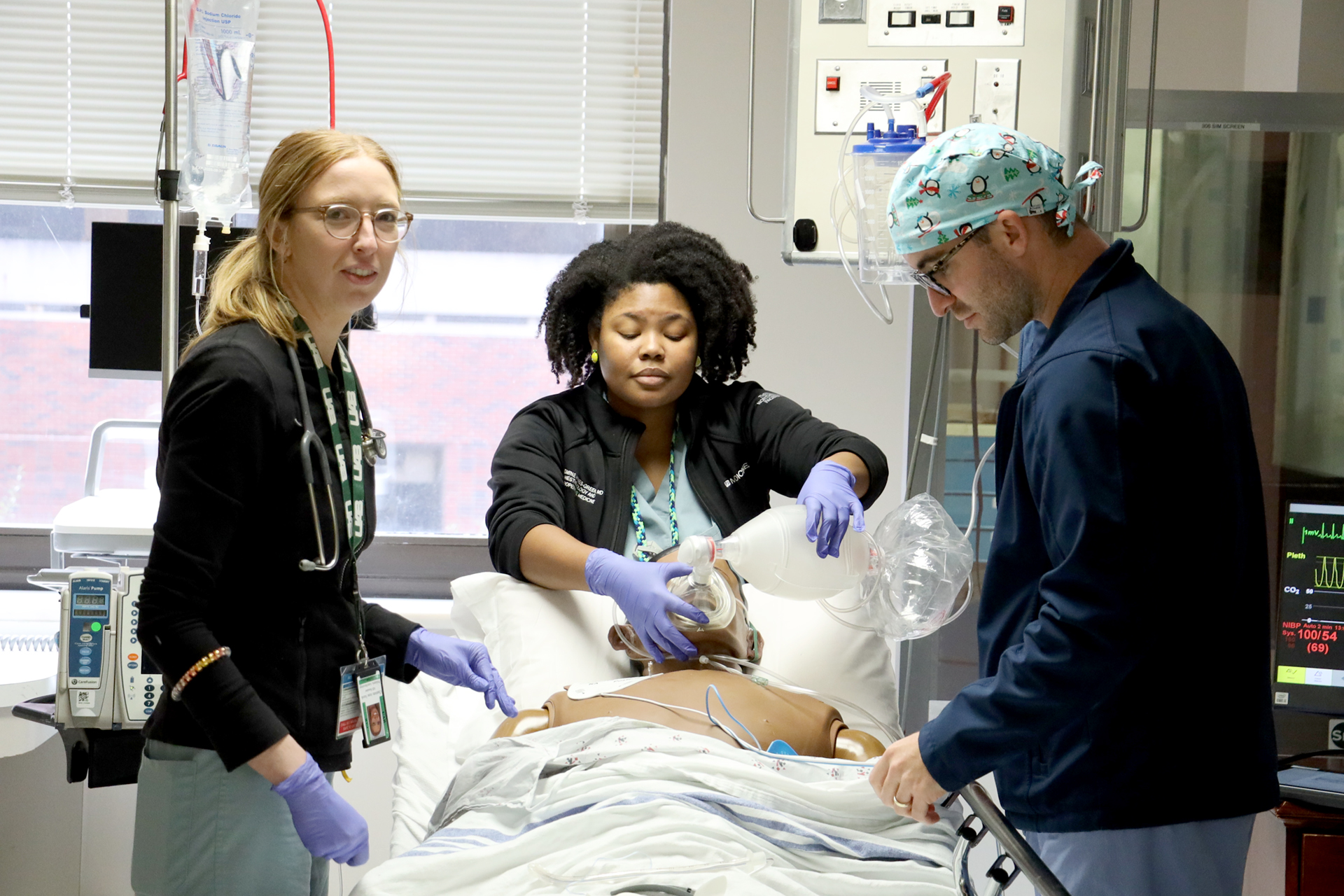Clinical Simulation offers Anesthesia Trauma Bootcamp

In terms of improving patient care and safety, UAB Clinical Simulation goes above and beyond — including for those going under.
Since 2021, Clinical Simulation has coordinated with the UAB Department of Anesthesiology and Perioperative Medicine to offer a comprehensive Trauma Bootcamp, an intensive experience designed for third-year anesthesiology residents.
“It’s a way to prepare these residents to start taking senior trauma calls,” said Andrea Hammett, senior simulation coordinator for Clinical Simulation and associate director of the Department of Anesthesiology and Perioperative Medicine Simulation Program. “They’ve had a few didactic sessions prior to this, but the bootcamp is giving them all the necessary tools to be more confident and successful when they start on their journey of becoming trauma seniors.”
The day-long camp itself is split into two components — procedural in the morning and immersive in the afternoon. During the morning session, learners apply lessons learned in preparation toward practicing specific procedures, while the immersive sessions put their skills to the test in a high-fidelity simulated environment.
According to Hammett, the results have been overwhelmingly positive.
“We’ve been collecting data that shows an increase in confidence levels immediately post bootcamp and at the three-month check,” she said. “They really get a lot out of it.”
Resident and recent learner Charlotte Snook can attest.
“It’s remarkable to see the growth in yourself and classmates as you take the knowledge and information learned as a junior resident and use it as a senior to make high-level clinical decisions,” she said. “For instance, we all know and have learned the signs and symptoms of hemorrhagic shock and tension pneumothorax, but being able to take that knowledge and make clinical decisions is a higher-level skillset.”
For resident Zasmine Hymes-Green, one key takeaway was communication.
“I learned about the importance of communication between all members of the patient’s care team,” Hymes-Green said. “With effective and clear communication, we can provide the best care to the patient.”
Hymes-Green observed another form of care, this type focused on the learners themselves.
“We were able to discuss scenarios that we may encounter, but in a safe and controlled environment,” she said.
In all its simulation experiences, the Clinical Simulation team strives to provide a psychologically safe environment in which learners can practice.
“It’s eye-opening for them,” Hammett said. “By the end of the day, they feel ready to move forward with their new responsibilities.”




0 Comments